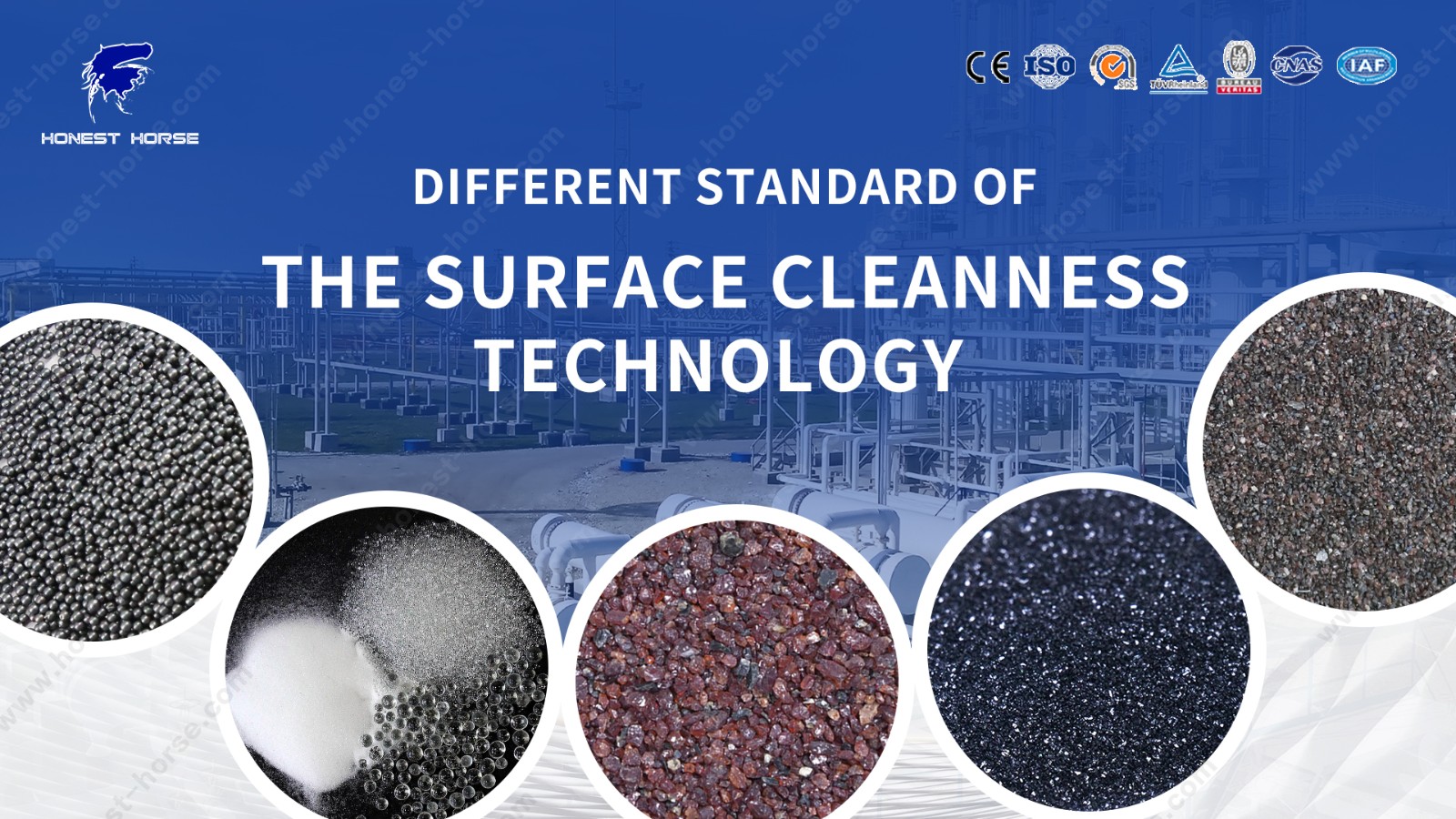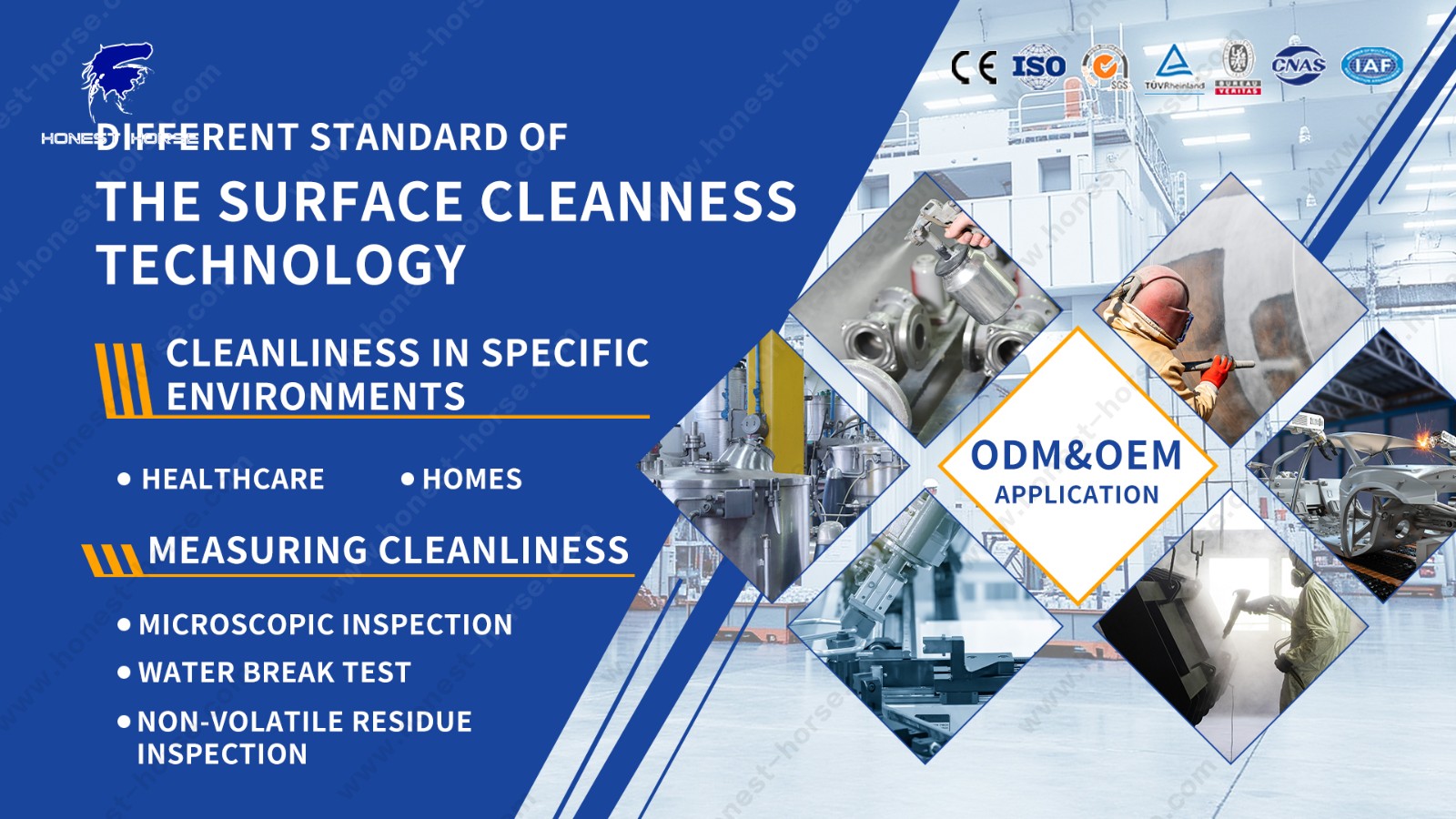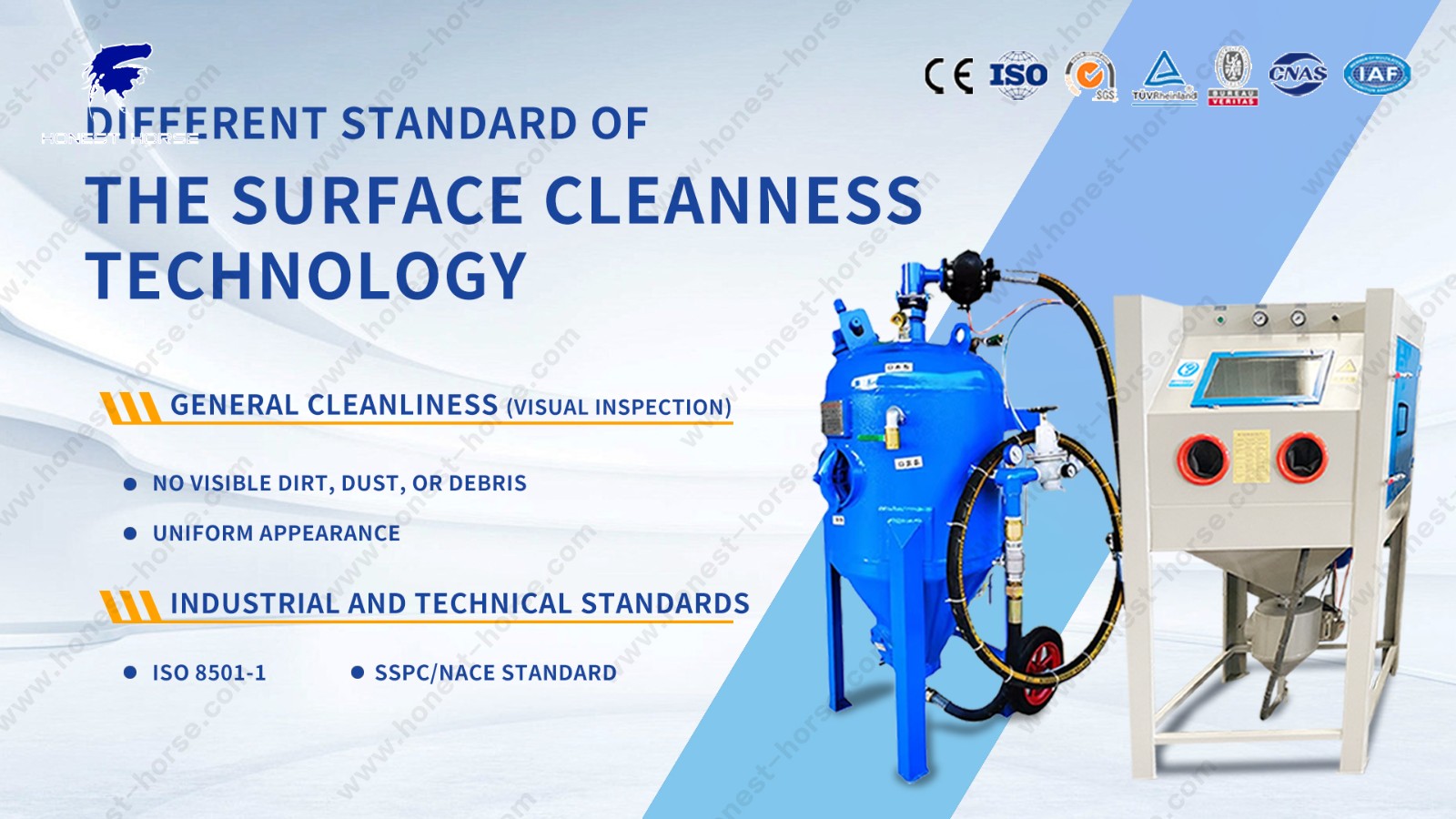Different standard of the surface cleanness technology
General Cleanliness (Visual Inspection)
This is the most basic level of cleanliness and involves:
· No visible dirt, dust, or debris:Surfaces should appear clean and free from obvious imperfections like streaks, stains, or smudges.
· Uniform appearance:For polished surfaces, there should be a consistent color and finish without obvious blemishes.
Industrial and Technical Standards
For applications like coating or manufacturing, more specific and stringent standards are used:
· ISO 8501-1:This international standard provides visual cleanliness grades based on the level of rust and contaminants on surfaces after abrasive blasting.
· SSPC/NACE Standards:Organizations like the National Association of Corrosion Engineers (NACE) and SSPC issue standards that categorize cleanliness levels, sometimes specifying what must be removed, such as mill scale, rust, and oil, to a "white metal" clean level.
Cleanliness in Specific Environments
Different settings have unique cleanliness expectations:
· Healthcare:In a healthcare setting, high-touch surfaces need regular cleaning, and surfaces are cleaned in a specific way to remove germs, often by using cleaning cloths in an S-shape pattern.
· Homes:For general home cleaning, surfaces should be cleaned with appropriate products when they are visibly dirty, and high-touch surfaces should be cleaned more frequently, according to the CDC.
Measuring Cleanliness
Beyond visual inspection, more detailed methods are used:
· Microscopic Inspection:Low-power microscopes can be used to detect microscopic contaminants on surfaces.
· Water Break Test:This test can determine if water spreads or breaks on a surface, indicating it is clean.
· Non-Volatile Residue Inspection:This method is used to identify the level of remaining residue after cleaning.



2005-2022 © All Rights Reserved.HONEST HORSE (CHINA) HOLDING LIMITED

 English
English Spanish
Spanish Arabic
Arabic